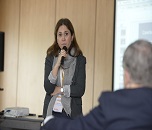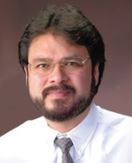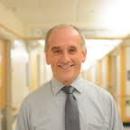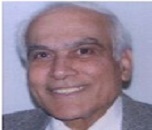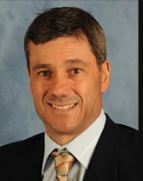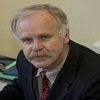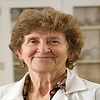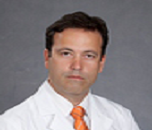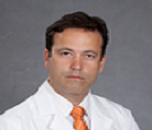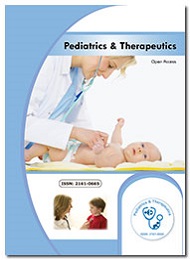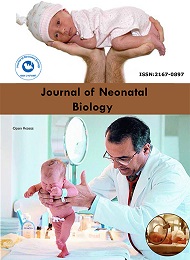Theme: Shaping the Future of Child Health with Clinical Pediatrics Research
Clinical Pediatrics 2022
- About Conference
- Sessions/Tracks
- Relevant Conferences
- Clinical Pediatrics Societies & Associations
- Market Analysis
30th International Conference on Clinical Pediatrics 2022 Conference will be organized during June 13-14, 2022 Madrid, Spain on the theme Shaping the Future of Child Health with Clinical Pediatrics Research.
Pediatrics is that the medical branch that involves the medical aid and treatment for neonates, babies, infants, children, and adolescents. Medical specialty cares are often provided to the individuals up to the age of twenty one as per the Yankee Academy. The word medical specialty suggests that ‘healer of children’. Our medical specialty conferences give a singular.
Clinical Pediatrics 2022 is the branch that deals with the Pediatrics medicines for well-being and medical consideration of children, and adolescents from birth up to the age of 18. The main aim of the study of Pediatrics is to control new-born and infant rate of deaths, control the spread of Pediatric infectious disease. Many of the clinical trials and diagnosing technology methods were introduced to detect the actual initiation of diseases in infants and children.
The goal of paediatrics study is to reduce infant and child rate of deaths, manage the spread of infectious disease, promote healthy lifestyles for a long disease-free life and to reduce the problems in children and adolescents with chronic conditions The goal of paediatrics study is to reduce infant and child rate of deaths, manage the spread of infectious disease, promote healthy lifestyles for a long disease-free life and to reduce the problems in children and adolescents with chronic conditions.
Who can attend?
Pediatric Nutrition, Pediatric Surgery, Pediatric Dentistry, Scientists, Doctors, Child Health Services, Pediatricians, Pediatric Clinicians, Pediatric Associates, Pediatrics Students, Specialists in Adolescent Medicine, Pediatric Nursing.
Why to Attend:
Attending a conference means that you can meet more advanced researchers, as well as established senior professionals and scholars. Listening to talks and presentations can open up new ways of thinking about a specific topic or even give you a new idea, one that you had previously not though about. Conference presentations provide great opportunities for you to communicate your research to a wide and interested audience, get feedback on your work, learn from other presenters and broaden your professional network. Preparation and practice are key to getting the most out of these occasions.
Exceptional Benefits includes:
- CME accredited certification
- All accepted abstracts will be published in the conference souvenir & respective journals
- Each abstract will receive a DOI
- Certificate Accreditation by the International Organizing Committee (IOCM)
- All accepted abstracts will be published in the conference souvenir & respective journals
- Global Networking Opportunities
Track 1: Clinical Pediatrics
Clinical Pediatrics is a peer-reviewed medical journal of Pediatrics, Clinical Pediatrics and Research is an open access, peer reviewed, scholarly journal dedicated to publish articles in all areas of clinical and surgical Pediatric medicine and child health. Clinical Pediatrics a peer-reviewed monthly journal, is a must read for the busy pediatrician. Clinical Pediatrics contains state-of-the-art, accurate, concise and down-to earth information on practical, everyday child care topics whether they are clinical, scientific, behavioural, educational, or ethical.
Track 2: Neonatology
Neonatology can solve most health problems of new-borns; a Neonatologist is trained specifically to handle the most complex and high-risk situations. To take care of such young new-born infants, a subspecialty of Pediatrics has evolved known as neonatology that deals with the medical care of infants less than four weeks of age, especially those that are born premature, of low birth weight, with birth asphyxia, birth defects or are ill and need hospitalization. Special neonatal intensive care units called NICUs are available in most standard hospitals for such babies.
Track 3: Pediatrics Health Care
Pediatric Healthcare is committed to providing the highest quality comprehensive care to infants, children, and adolescents in a compassionate manner, and to assisting parents in the endeavour of rearing their children to reach their optimal physical, emotional and spiritual development.
Track 4: Pediatric Cardiology
Pediatric cardiologists are heart doctors who work with children. Their practice is different from that of heart doctors who treat adults. Pediatric cardiologists primarily treat problems with a child’s heart's structure or rhythm. A Pediatric cardiologist will work with your child's regular pediatrician or another primary care provider. Pediatric cardiologists don’t do surgery. If your child needs an operation, you’ll need to see a children's heart surgeon.
Track 5: Pediatric Endocrinology and Diabetes
Diabetes and endocrinology is a broad-ranging specialty encompassing the diagnosis and treatment of patients with conditions caused by abnormalities of hormone production or action, and the endocrine glands that produce them. Endocrinology focuses on the body glands and how the hormones they produce help body systems work together and allow people to function. When things are not working well, children and adolescents may have problems with metabolism, growth and development, puberty and more. the most common endocrine disease is diabetes. There are many others. They are usually treated by controlling how much hormone your body makes. Hormone supplements can help if the problem is too little of a hormone.
Track 6: Pediatric Nursing
Pediatric nursing is a specialization of the nursing profession that focuses on Pediatrics and the medical care of children, from infancy to the teenage years. This is an important field because the health of children is distinct from that of adults due to the growth and development that occurs throughout childhood. Pediatric nurses usually work in a multidisciplinary team with other health professionals to provide the best medical care possible for children. They play an important role to monitor the health of young patients and provide care and support throughout their treatment.
Track 7: Pediatrics & Clinical Pediatrics
Clinical Pediatrics a peer-reviewed monthly journal, is a must read for the busy pediatrician. CLP contains state-of-the-art, accurate, concise and down-to earth information on practical, everyday child care topics whether they are clinical, scientific, behavioural, educational or ethical. Pediatrics is to reduce infant and child rate of deaths, control the spread of infectious disease, promote healthy lifestyles for a long disease-free life and help ease the problems of children and adolescents with chronic conditions.
Track 8: Pediatrics Allergy and Infections
Pediatrics Allergies and Infections can affect anyone, regardless of age, gender, race or socioeconomic class. Generally, allergies are more common in children; however, a first-time occurrence can happen at any age, or recur after many years of remission. There is a tendency for allergies to occur in families, although the exact genetic factors that cause it are not yet understood.
Track 9: Pediatics Critical Care and Emergency Medicine
Pediatric emergency medicine and Pediatric critical care provide care for all children in all states of distress. The primary distinction between the two is that Pediatric emergency medicine must be prepared to locate, stabilize, and transfer children in extremis to appropriate care. Therefore, Pediatric emergency medicine must extend beyond any single or group of institutions and into the regional community. Thus, Pediatric emergency medicine and Pediatric critical care have similar and distinct information needs and workflows, many of which are high-risk.
Track 10: Pediatrics Dermatology
Skin changes are common in children. Common concerns are birthmarks (e.g., hemangiomas and port wine stains), atopic and contact dermatitis, acne, and alopecia areata. The authors review advances in common and not so common skin changes in Pediatric patients. Newest technology in lasers, in particular for the treatment of vascular birthmarks such as port-wine stains and hemangiomas. Sedation or topical anaesthetics are used to make these procedures more comfortable for children.
Track 11: Pediatrics Diagnosis
Diagnosis is the crucial first step in the journey of patient care. The entire treatment plan that a doctor may formulate depends on the outcome of this vital process. The concept of differential analysis came about primarily to act as a tool for ensuring error- free diagnosis.
Track 12: Pediatrics Nephrology and Urology
Pediatric nephrology & urology focuses on the kidneys, ureters, bladder and urethra in children. If your child has kidney or urinary tract disease, bladder problems, kidney stones, or high blood pressure, a Pediatric nephrologist has the special skills and experience to treat your child. Pediatric nephrologists treat children from infancy through late adolescence and in some Centers up to young adulthood. Pediatric Urology is a surgical subspecialty of medicine dealing with the disorders of children’s genitourinary systems. Pediatric urologists provide care for both boys and girls ranging from birth to early adult age. The most common problems are those involving disorders of urination, reproductive organs and testes.
Track 13: Pediatrics Nutrition and Breast Feeding
Breastfeeding for 6 months has many benefits for the infant and mother. Chief among these is protection against gastrointestinal infections which is observed not only in developing but also industrialized countries. Early initiation of breastfeeding, within 1 hour of birth, protects the new-born from acquiring infections and reduces new-born mortality. The risk of mortality due to diarrhoea and other infections can increase in infants who are either partially breastfed or not breastfed at all. Breast-milk is also an important source of energy and nutrients in children aged 6–23 months. It can provide half or more of a child’s energy needs between the ages of 6 and 12 months, and one third of energy needs between 12 and 24 months. Breast milk is also a critical source of energy and nutrients during illness, and reduces mortality among children who are malnourished.
Track 14: Pediatrics Oncology and Heamatology
Childhood cancers are unique type of cancers, the etiology of which is uncertain however majority of these cancers are curable. Common cancers seen in childhood include Acute Leukemia (Blood cancers), solid tumor like neuroblastoma, Wilms’ Tumor and Brain tumors. The cure rates of these cancers have improved from less than 10% survival in 1960’s to > 90% survival in the present age. Outcome of childhood cancers is one of the most impressive amongst all cancers across age groups put together provided these cancers are diagnosed early and treated appropriately.
Track 15: Pediatric Radiology
Paediatric radiology is a subspecialty of radiology involving the imaging of fetuses, infants, children adolescents and young adults. Many paediatric radiologists practice at children's hospitals. Although some diseases seen in paediatrics are the same as that in adults, there are many conditions which are seen only in infants. The specialty has to take in account the dynamics of a growing body, from pre-term infants to large adolescents, where the organs follow growth patterns and phases. These require specialised imaging and treatment which is carried out in a Children's hospital, which has all the facilities necessary to treat children and their specific pathologies.
Track 16: Pediatrics Surgery
A Pediatric surgeon specializes in the treatment of birth defects and childhood medical conditions through surgical procedures and on-going care. Surgical errors occurring during these procedures may have a profound impact on the child’s physical and mental development and could severely alter his or her quality of living.
Relevant Conferences: Pediatrics Conferences | Clinical Pediatrics Conferences | Neonatology Conferences | Pediatrics Conferences 2022 USA | Pediatrics Conferences 2022 Asia | Pediatrics Conferences 2022 Europe | Pediatrics Conferences 2022 Middle East | Pediatrics Conferences 2022 Canada | Pediatrics Conferences 2022 Japan | Pediatrics Conferences 2022 Australia
36th International Conference on Neonatology and Perinatology July 18-19, 2022 Amsterdam, Netherlands; 35th World Pediatrics Conference August 01-02, 2022 Rome, Italy; 33rd European Pediatrics Conference September 05-06, 2022 Berlin, Germany; 5th International Conference on Advances in Neonatal and Pediatric Nutrition September 22-23, 2022 Rome, Italy; 9th International Conference on Pediatric Cardiology December 05-06, 2022 Rome, Italy; 9th Congress of the European Academy of Paediatric Societies October 07-11, 2022 Barcelona & Online; 8th International Conference on Pediatrics April 25-26, 2022 London, UK; 33rd Annual Spring Conference on Pediatrics April 20-23, 2022 Oahu, Hawaii; 2nd Annual Fall Conference on Clinical Updates in Pediatrics November 02 - 05, 2022 Paradise Island, Bahamas; 14th Annual Conference on Emergencies & Challenges in Pediatrics December 16 - 17, 2022 New York City, New York.
EUROPE: Society for Pediatric Research, European Society of Pediatric and Neonatal Intensive Care, European Academy of Pediatrics, European Society for Pediatric Dermatology, Associations for European Pediatrics and Congenital Cardiology (AEPC), Padua, Italy, Czech Pediatric Society (CPS), European Academy of Pediatric Societies(EAPS), Geneva, Switzerland, European Academy of Pediatrics (EAP), Geneva, Switzerland, European Association of Pediatric Education (EAPE), European Confederation of Primary Care Pediatricians (ECPCP), UK, European Pediatric Association, European Pediatric Association (EPA/UNESPA), Berlin, Germany, European Pediatric Neurology Society(EPNS), Bolton, UK, European Pediatric Surgeon’s Association (EUPSA), London, UK, European Society for Child and Adolescent Psychiatry (ESCAP), Geneva, Switzerland, European Society of Pediatric Dermatology (ESPD), Prague, Czech Republic, European Society of Pediatric Infectious Diseases (ESPID), Scotland, UK, European Society of Pediatric Neonatal and Intensive Care (ESPNIC), Geneva, Switzerland, European Society of Pediatric Neurosurgery(ESPN), Athens, Geneva, Switzerland, European Society of Pediatric Research (ESPR), UK, European Society of Pediatrics Allergology and Clinical Immunology (ESPACI), European Society of Pediatrics Endocrinology (ESPE), Bristol, UK.
USA: American Academy of Pediatrics, Academy of Neonatal Nursing, Association of Pediatric Oncology Nurses, Association of Child Neurology Nurses, National Association of Neonatal Nurses, National Association of Pediatric Nurse Practitioners, National Certification Board of Pediatric Nurse Practitioners and Nurses, Society of Pediatric Nurses, American Pediatric Surgical Nurses Association, Northeast Pediatric Cardiology Nurses Association, American Pediatric Surgical Association, American Association for Pediatric Ophthalmology and Strabismus, American Society of Pediatric Otolaryngology, Society for Pediatric Anesthesia, International Association of Pediatric Nurses, Canadian Pediatric Society, Pediatric Dental Association, Georgia Pediatric Practice Managers Association, Academic Pediatric Association, Children's Hospital Association, North Carolina Pediatric Society, North Dallas Pediatric Association, Burlington Pediatric Association, American Pediatric Surgery Association, American Pediatric Society
ASIA PACIFIC: Asia Pacific Pediatric Association Malaysia, Asian Society for Pediatric Research Japan, The Malaysian Pediatric Association Japan, Association of Pediatric Surgeons Bangladesh, Indonesian Society of Pediatric Surgeons Indonesia, Japanese Society of Pediatric Surgeons Japan, Korean Association of Pediatric Korea, Taiwanese Association of Pediatric Taiwan, Vietnam Association of Pediatric Vietnam.
All over the world, parents are becoming more aware about the health of their children. As a result, universally the Pediatrics market is growing at a significant step with companies scrambling to get an important share of the market.
30th International Conference on Clinical Pediatrics 2022 is a universal podium for offering research about Pediatrics and related topics, exchanging ideas around it and thus, contributes in dissemination of knowledge in management of the disease for the advantage of the society. Kids are frequently inclined to ailment and illnesses and catch contaminations effortlessly. Henceforth the Pediatric market as far as human services is a thriving one. Changes in way of life and unfortunate propensities winning in the family to a great extent add to the development of this market. Expanding mindfulness about Pediatric prescription, the need to viably handle ailments in youngsters, FDA bolster for Pediatric clinical preliminaries investigate, and the expanding weight of Pediatric infections, for example, diabetes, is a portion of alternate components adding to the development of the market. Pediatric healthcare services are managing the treatment of child related diseases, their improvement and care.
The global child day care services market size is expected to grow from $271.67 billion in 2021 to $295.99 billion in 2022 at a compound annual growth rate (CAGR) of 9%. The growth in the market is mainly due to the companies rearranging their operations and recovering from the COVID-19 impact, which had earlier led to restrictive containment measures involving social distancing, remote working, and the closure of commercial activities that resulted in operational challenges. The child day care services market is expected to reach $415.96 billion in 2026 at a CAGR of 9%.
The industry has very low capital intensity and this is reflected in its wages-to-depreciation ratio of 1:15.35. This indicates that for every £1.00 allocated to capital costs, £15.35 is spent on wage costs.
Pediatrics Market Analysis Globally:
Conference Highlights
- Pediatrics Surgery
- Clinical Pediatrics
- Neonatology
- Pediartics Health Care
- Pediatric Cardiology
- Pediatric Endocrinology and Diabetes
- Pediatric Nursing
- Pediatrics & Clinical Pediatrics
- Pediatrics Allergy and Infections
- Pediatrics Critical Care and Emergency Medicine
- Pediatrics Dermatology
- Pediatrics Diagnosis
- Pediatrics Nephrology and Urology
- Pediatrics Nutrition and Breast Feeding
- Pediatrics Oncology and Hematology
- Pediatrics Radiology
To share your views and research, please click here to register for the Conference.
To Collaborate Scientific Professionals around the World
| Conference Date | June 13-14, 2022 | ||
| Sponsors & Exhibitors |
|
||
| Speaker Opportunity Closed | Day 1 | ||
| Poster Opportunity Closed | Click Here to View | ||
Useful Links
Special Issues
All accepted abstracts will be published in respective Our International Journals.
- Journal of Pediatrics & Therapeutics
- Journal of Current Pediatric Research
- Journal of Neonatal Biology
Abstracts will be provided with Digital Object Identifier by




